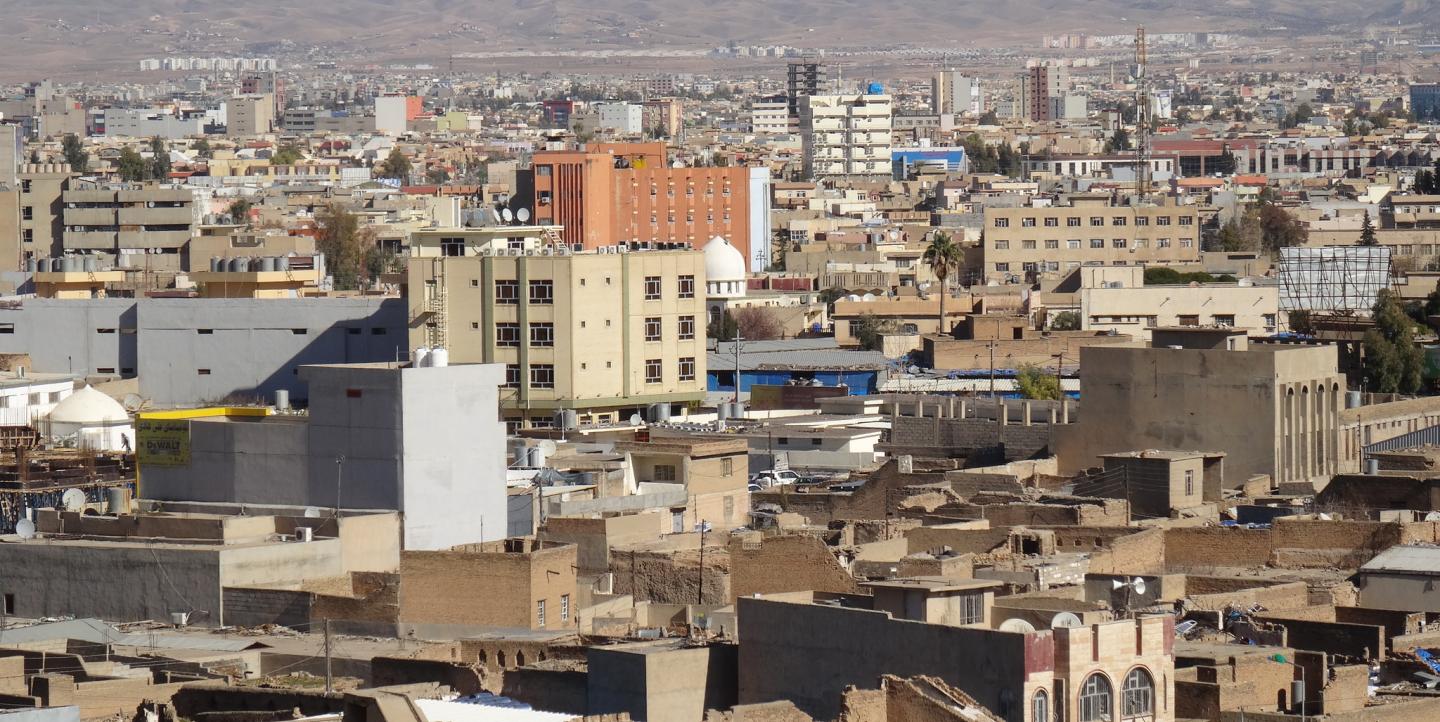When I visited Iraq for the first time in October 2003, the country was one of the most dangerous places for journalists to work. Unfortunately, that reality has not changed. Since 2003, 102 journalists have been murdered in the country, according to the Committee to Protect Journalists, and many more have been harmed or threatened.
As a reporter for the Mexican newspaper El Independiente, I spent two weeks in Iraq, covering the period when an international military coalition occupied the country. I was amazed by the destruction there. At that time, the conventional war had ended, but violence was still claiming the lives of hundreds of soldiers and civilians. About 20 bombings were taking place in Iraq every day. I interviewed victims and families affected by the violence, and visited markets, schools and mosques. I saw military helicopters and patrols passing by and drove through military and militia checkpoints that had been set up along the roads.
In the midst of the enormous pain, sadness and destruction I witnessed, I was still able to see an immense desire for peace, human rights and justice in the faces of the Iraqi men and women I met. My stories were about how the Iraqi people were trying to find a path to stability and peace. A number of my stories were about the first human rights organizations created in the aftermath of the conflict.
Ten years later, I visited again as an ICFJ Knight International Journalism Fellow. In October 2013, the U.S. Institute of Peace invited me to participate in its Tech Camp, in Erbil, an ancient city in the Kurdistan region. I witnessed the pride and strong spirit of the Iraqi journalists, bloggers and social-media users. Despite a terrorist incident that took place in Erbil during the event, we stayed and completed our workshop on technology and social needs.
I also met Ibrahim Alsragey, an Iraqi journalist who directs the Baghdad-based Journalists Rights Defense Association. I talked to him about Periodistas en Riesgo (Journalists at Risk), a map I was developing as a Knight Fellow to track attacks against journalists and bloggers in Mexico. Ibrahim expressed strong interest in the map, so I told him, “You can build your own map.” He agreed, and we immediately started to build it.
The map we built together allows people who witness an attack to report it on the site and highlight its location.
Alsragey told IJNet at the time that he hoped the map would counter what he perceived as a lack of interest from international organizations about the dangers journalists face in Iraq and the Iraqi government’s lack of will to stop attacks against them. He said he also hoped the map would help expose those who are behind the attacks and identify the danger zones for journalists.
The platform enables people to report anonymously via a website, SMS, smartphone app or email. Before the report appears publicly on the map, an editor of the site verifies it for accuracy. Once verified, the entry appears on the map. Journalists can sign up to receive alerts as attacks are reported.
The next stage: a more robust platform and digital security trainers in all 18 Iraqi provinces
With the support of the Iraq Foundation, the Iraqi Journalists Rights Defense Association and the U.S. Institute of Peace, we are now building a new, more-robust mapping platform that includes digital security resources and the names of organizations that can help Iraqi journalists and bloggers who defend freedom of expression. We're also teaching digital security skills.
The new platform, Tabeir Iraq, will allow a network of Iraqi users to send reports about an attack on any journalist, blogger or human-rights defender. Tabeir is a project of the Iraq Foundation to enhance freedom of expression in Iraq. (Tabeir means "expression" in Arabic.) The platform includes an Arabic-language, regionally tailored version of the Digital and Mobile Security Manual for Journalists and Bloggers, which I originally created for at-risk journalists and bloggers in Mexico. The platform also lists physical and digital security resources that can help journalists and bloggers.
We've designed an online course to train a group of 40 trainers who will promote the map and train other colleagues in digital security, risk reduction and mapping of attacks in all 18 Iraqi provinces. The course, underway now, is conducted in Arabic, and we expect the new cadre of trainers will train more than 200 journalists, bloggers and human rights defenders across Iraq.
With this new map and training, we'll empower more people in Iraq to defend freedom of expression using digital tools. Iraqi journalists, bloggers and free speech advocates now have a tool to track attacks against them; a platform that helps them design risk-reduction plans; and a way to help them protect themselves so that they can continue to inform the Iraqi people and bolster free expression.
Jorge Luis Sierra is an award-winning Mexican investigative reporter and editor and an expert in digital security. Learn more about his work as an ICFJ Knight Fellow here.
Global media innovation content related to the projects and partners of the ICFJ Knight Fellowships on IJNet is supported by the John S. and James L. Knight Foundation and edited by Jennifer Dorroh.
Main image CC-licensed by Flickr via Jeffrey Beall.

